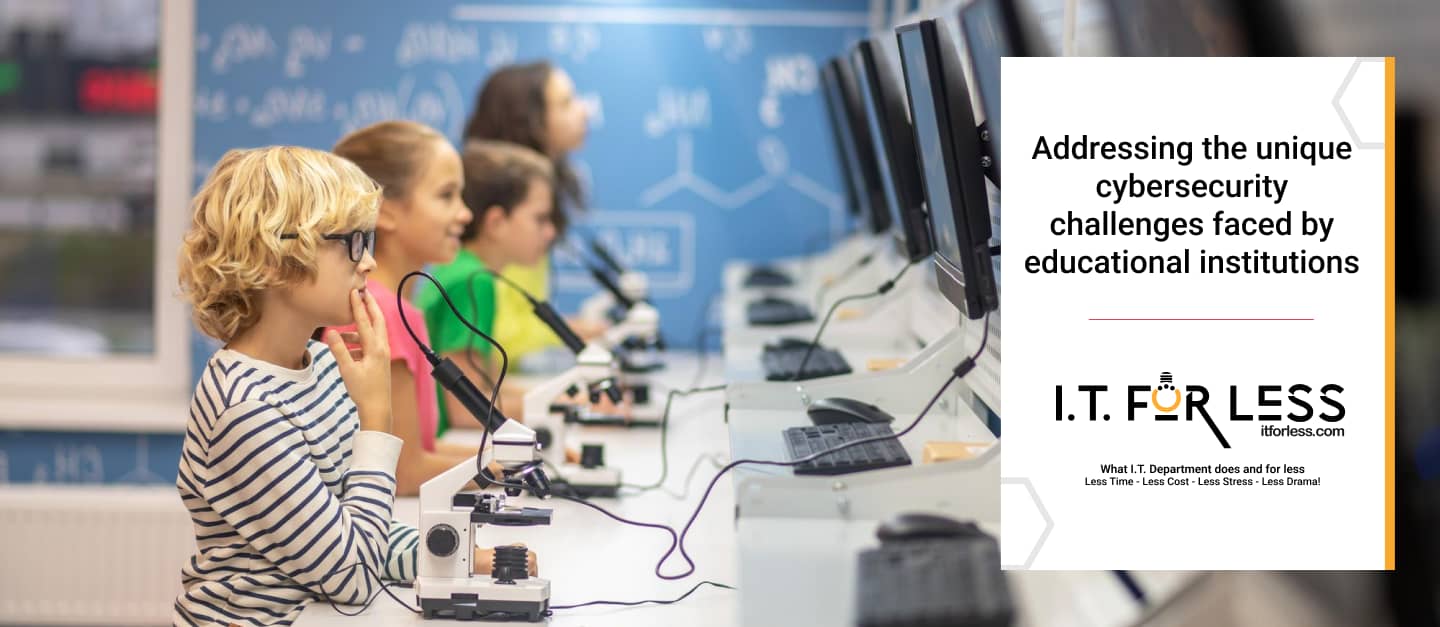Educational institutions serve as crucial hubs for knowledge dissemination, but their digital transformation brings forth a host of cybersecurity challenges. Understanding and effectively addressing these challenges are paramount to maintaining the integrity of academic environments. Here’s a comprehensive exploration of the unique cybersecurity hurdles faced by educational institutions, along with practical solutions and precautions:
1. Data Breaches:
Educational institutions hold vast amounts of sensitive student and staff data, making them prime targets for data breaches. This exposes personal information, financial data, and academic records to potential compromise.
Solution: Implement robust data encryption protocols and access controls to protect sensitive data. Regularly audit data storage systems and ensure compliance with data protection regulations.
2. Phishing Attacks:
Phishing emails remain a prevalent threat, tricking users into revealing credentials or downloading malware, thereby compromising security.
Solution: Conduct regular cybersecurity awareness training to educate users about phishing tactics. Implement email filtering systems to detect and block suspicious emails.
3. Weak Authentication:
Reliance on weak passwords or inadequate authentication methods makes systems vulnerable to unauthorized access.
Solution: Enforce strong password policies and implement multi-factor authentication (MFA) to enhance authentication security. Regularly update and patch authentication systems to address vulnerabilities.
4. Insufficient Security Awareness:
Lack of cybersecurity awareness among students and staff can lead to risky behaviors, such as clicking on malicious links or sharing sensitive information.
Solution: Offer comprehensive cybersecurity training programs tailored to different user groups. Promote a culture of cybersecurity awareness through regular communications and reminders.
5. Inadequate Patch Management:
Failure to apply security patches and updates promptly leaves systems vulnerable to known exploits and vulnerabilities.
Solution: Establish a proactive patch management process to ensure timely deployment of security updates. Conduct regular vulnerability assessments to identify and prioritize patching efforts.
6. BYOD (Bring Your Own Device) Risks:
Allowing personal devices on campus networks increases the complexity of network security and exposes systems to additional vulnerabilities.
Solution: Develop and enforce BYOD policies outlining security requirements for personal devices. Implement network segmentation and access controls to mitigate risks associated with BYOD.
7. Insecure Wi-Fi Networks:
Poorly secured or unencrypted Wi-Fi networks are susceptible to exploitation by attackers.
Solution: Implement strong encryption protocols and authentication mechanisms for Wi-Fi networks. Regularly monitor network traffic for signs of unauthorized access or suspicious activity.
8. Lack of Resource Allocation:
Limited budgets and resources may hinder the implementation of robust cybersecurity measures and staff training.
Solution: Advocate for increased funding and resource allocation for cybersecurity initiatives. Prioritize investments based on risk assessments and compliance requirements.
9. Ransomware Attacks:
Educational institutions are increasingly targeted by ransomware attacks, disrupting operations and leading to data loss.
Solution: Develop and test ransomware response plans to ensure effective incident response and recovery. Implement robust backup and disaster recovery solutions to mitigate the impact of ransomware attacks.
10. IoT Security:
The proliferation of IoT devices on campus introduces additional security risks if not properly secured.
Solution: Implement security best practices for IoT devices, including regular firmware updates and network segmentation. Conduct thorough risk assessments before deploying new IoT devices.
11. Insider Threats:
Students, faculty, or staff with access to sensitive information may compromise security through malicious actions or inadvertent mistakes.
Solution: Implement least privilege access controls and monitor user activity for signs of insider threats. Educate users about the importance of security and the potential consequences of insider threats.
12. Compliance Challenges:
Educational institutions must comply with various data protection regulations, which can be challenging to implement and maintain.
Solution: Develop and maintain comprehensive compliance programs to ensure adherence to regulatory requirements. Regularly audit and assess compliance to identify areas for improvement.
13. Legacy Systems:
Use of outdated software and systems creates security vulnerabilities that are easier for attackers to exploit.
Solution: Develop a plan to retire legacy systems and replace them with modern, supported alternatives. Implement compensating controls to mitigate risks associated with legacy systems in the interim.
14. Cybersecurity Skills Shortage:
Difficulty in recruiting and retaining skilled cybersecurity professionals hinders institutions’ ability to manage risks effectively.
Solution: Invest in cybersecurity training and professional development programs to build internal expertise. Explore partnerships with industry organizations and academic institutions to address skills gaps and promote knowledge sharing.
In conclusion, by addressing these unique cybersecurity challenges with proactive measures and effective solutions, educational institutions can enhance their security posture and protect their systems, data, and intellectual assets from evolving threats. Through ongoing vigilance and collaboration, academic environments can remain safe and conducive to learning in the digital age.
